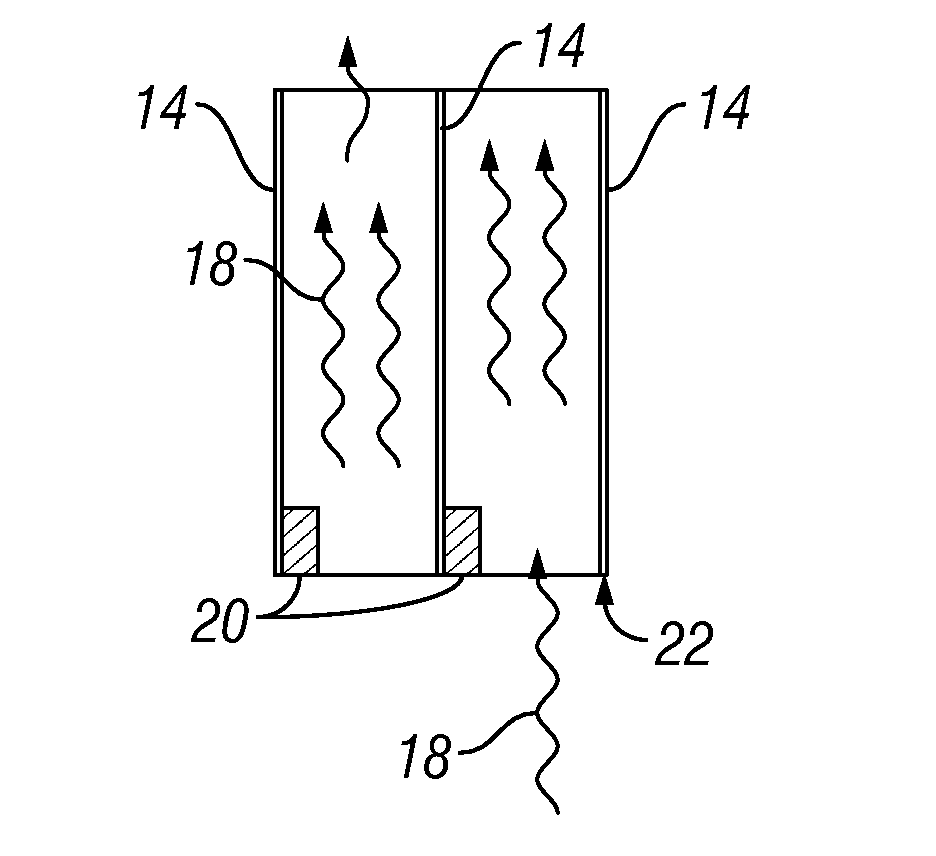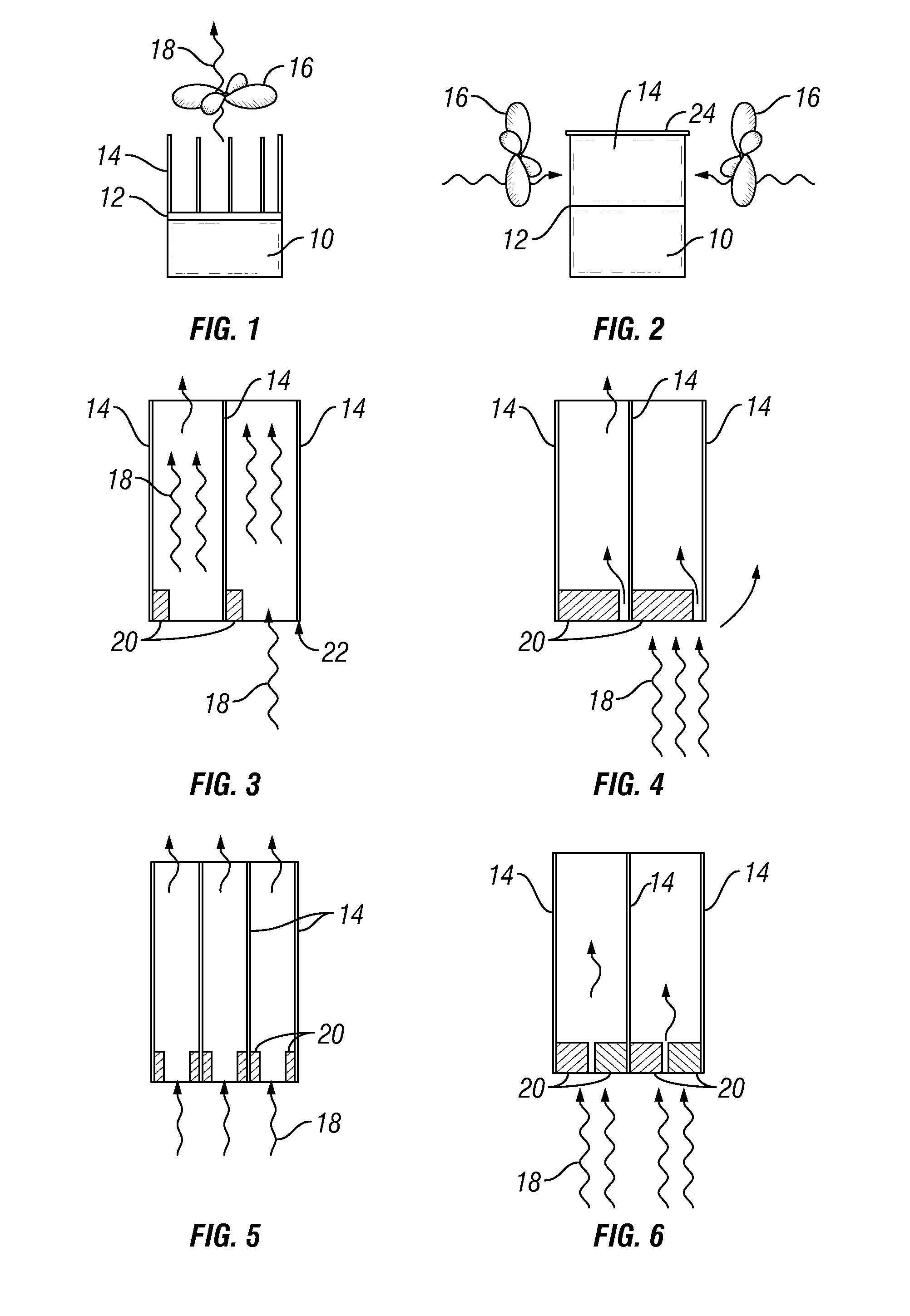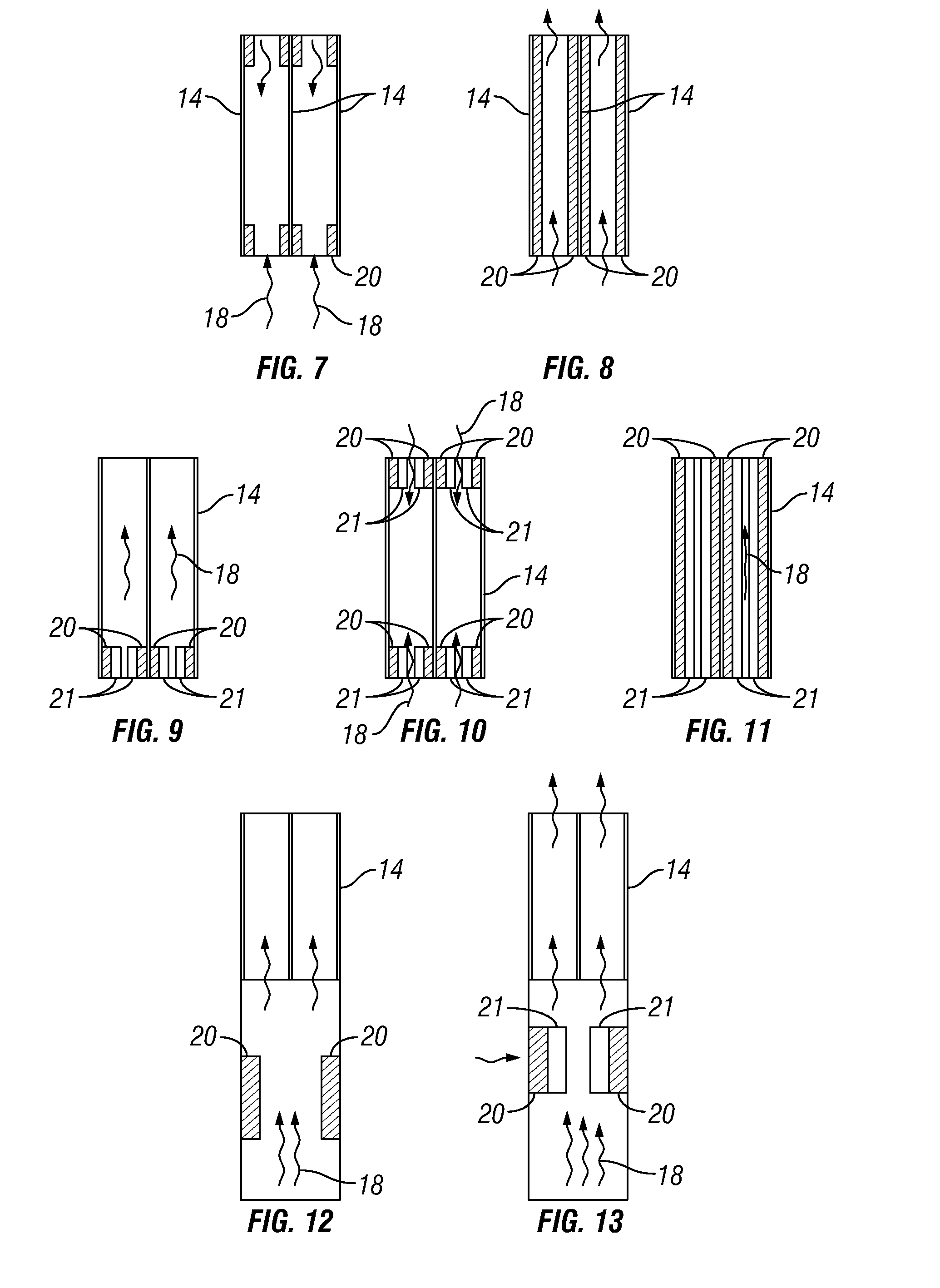Self-regulated cooling mechanism
a heat generation device and self-regulation technology, applied in the direction of lighting and heating apparatus, instruments, and the details of the semiconductor/solid-state device, can solve the problems of loss of efficiency, performance, efficiency degradation, etc., and achieve the effect of fine control of fluid flow, and reduction of the amount of heat removed from the devi
- Summary
- Abstract
- Description
- Claims
- Application Information
AI Technical Summary
Benefits of technology
Problems solved by technology
Method used
Image
Examples
second embodiment
[0029]In a second embodiment, two or more shape memory materials are disposed in thermal contact with the cooling fins, effectively realizing the same temperature as the heat-generating device being protected. The two or more shape memory materials are designed or selected to expand or contract at different temperatures. A first shape memory material may expand to partially restrict the fluid flow between the cooling fins at a first specified low temperature of the heat-generating device. A second shape memory material may expand at a second specified lower temperature of the heat-generating device to further restrict the fluid flow through the cooling fins. Conversely, the first and second shape memory materials will have differing temperatures of contraction at which they do not act to restrict the fluid flow through the cooling fins. Therefore, the amount of fluid flow restricted can be carefully and passively controlled.
[0030]The shape memory material can be disposed in contact ...
third embodiment
[0031]In a third embodiment, a heat-generating device has cooling fins disposed in contact to dissipate heat. The shape memory polymers are disposed in a manner to restrict fluid flow through the cooling fins. The stimulus for the shape memory material to expand or contract is supplied from an external source. While commonly used stimuli are electrical, magnetic, or thermal, any stimulus activating the shape memory material can be applied. A preferred electrical stimulus is generated and sent to the shape memory material in response to the processor detecting that the temperature of the heat-generating device is out of the desired operating range or desired operating set point. The temperature sensor may be part of a chip set that includes the processor and the processor may be the heat-generating device itself. Other temperature control schemes using the shape memory materials can be readily envisioned.
[0032]FIG. 1 is a side view of a typical heat-generating device 10 in thermal co...
PUM
 Login to View More
Login to View More Abstract
Description
Claims
Application Information
 Login to View More
Login to View More - Generate Ideas
- Intellectual Property
- Life Sciences
- Materials
- Tech Scout
- Unparalleled Data Quality
- Higher Quality Content
- 60% Fewer Hallucinations
Browse by: Latest US Patents, China's latest patents, Technical Efficacy Thesaurus, Application Domain, Technology Topic, Popular Technical Reports.
© 2025 PatSnap. All rights reserved.Legal|Privacy policy|Modern Slavery Act Transparency Statement|Sitemap|About US| Contact US: help@patsnap.com



